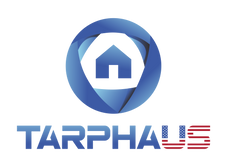
Using Technology to Solve Trucking’s Top Industry Issues
According to the American Transportation Research Institute’s (ATRI’s) Top Trucking Industry Issues survey which was released in the fall of 2021, fleets these days are dealing with tough issues including driver and technician shortages, truck parking, detention time, and compliance.
The good news is that fleets can address many of these critical concerns with the use of technology and operational improvements. Let’s tackle the possible answers to the difficulties mentioned in the ATRI survey
Recollect Drivers and Technicians
For the past five years, the driver shortage has been a major business worry. However, in 2021, a shortage of technicians also ranked in the top ten. These shortfalls can be addressed in three ways by fleets. They can encourage technicians and drivers to collaborate. To encourage interest in these professions, fleets might work with training institutions and engage with high schools. They can also concentrate on retention.
Fleets that seek to provide a nice work atmosphere, competitive pay, fantastic benefits, and technological advancements have an advantage in retaining drivers and technicians. Fleets may use advanced technology to improve efficiency and safety, reduce empty miles, and automate routine activities.
When fleets implement maintenance scheduling systems and remote diagnostics, for example, they can reduce employee dissatisfaction. By sending data that lets fleets plan and prioritize work in advance, remote diagnostics shifts maintenance from reactive to proactive. When these systems work together, they can:
Diagnose the problem and calculate the time it will take to fix it.
Determine which technicians are capable of resolving the problem.
Schedule maintenance ahead of time to avoid future problems.
Understanding and offering what drivers want can help fleets boost driver retention. On ATRI's list, driver compensation was ranked third. For mile-based drivers, the more fleets that can keep wheels rolling, the more money they may earn. Smartphone apps (such as PrePass) can help keep drivers on the road by allowing eligible truckers to avoid having to pull through weigh stations when other carriers must. Furthermore, telematics data aids fleets in implementing a performance-based pay structure that compensates drivers for fuel economy, safety, and other indicators.
Parking Issues for Trucks
The shortage of truck parking, which has made ATRI's Top 10 list for ten years in a row, is one issue that has drivers fleeing for the hills. For good reason, truck drivers rank truck parking as one of their top three concerns: it costs them money. According to ATRI, drivers waste an average of $4,600 a year seeking for parking. Additionally, when drivers have to cut runs short to find parking, fleets lose an average of $9,300 in revenue earning miles per truck every year.
Finding suitable parking can be made easier with the help of apps. As drivers travel along the road, the app notifies them of upcoming parking spots.
Concerns about traffic congestion on the highways
Highway congestion also costs fleets money in terms of fuel and time, as well as causing aggravating delays. While fleets cannot eliminate traffic congestion, they may use technology to improve planning and save time. Connecting trucks to infrastructure like weigh stations and toll booths helps freight move more efficiently. Fleets can utilize the technology to:
- Skip lines and pay tolls with transponders
- Improve route and prevent congestion
Maintaining a Safe Environment
Large trucks and buses were involved in 155,585 crashes, 76,705 injuries, and 4,751 fatalities in 2020, according to the Federal Motor Carrier Safety Administration (FMSCA). The rising incidence of crashes and increasing settlement sums in "nuclear verdicts" have caused insurance prices to rise, forcing carriers to take on more risk through increased deductibles, self-insurance, broader use of insurance captives, and reduced liability coverage. However, before fleets can reduce coverage to lower rates, they must enhance safety and reduce the number of crashes.
Before insuring a fleet, underwriters look at the FMSCA Safety Management System (SMS) scores. Carriers may enhance their SMS ratings by identifying safety trends and opportunities for improvement with Safety Software which assists fleets in telling their whole safety story and demonstrating that detected flaws have been addressed.
Scorecards for drivers improve safety as well. Fleets can prevent unsafe behavior by evaluating driver performance based on specific driving data from telematics or tracking systems, such as speeding, aggressive behavior, or idling. They also give carriers the ability to provide coaching and training to drivers who require it. Video telematics reduces collisions, distractions, and other harmful situations by providing driver coaching and training. When a collision happens, the footage captured can reveal driving behavior before, during, and after the collision. Reconstruction tools can also be used by fleets to establish the magnitude of G force, the location of the hit, and other details regarding an accident. This frequently aids in the exoneration of drivers and the removal of at-fault crashes from their records.
Persistent Compliance
The Compliance, Safety, and Accountability (CSA) program of the FMCSA ranked sixth on the ATRI list. Carriers currently have access to their CSA data via the FMSCA portal, but it's just data without the necessary tools. Technology aids fleets in putting data to work. The safety system gives you granular visibility into your fleet's safety and compliance data. This data is combined with real-time driving performance statistics. The research aids businesses in rewarding safe driving and increasing productivity.
There is no "quick cure" for every issue on ATRI's Top 10 list. However, the correct combination of technology and a commitment to safety and compliance can be a positive step forward.
